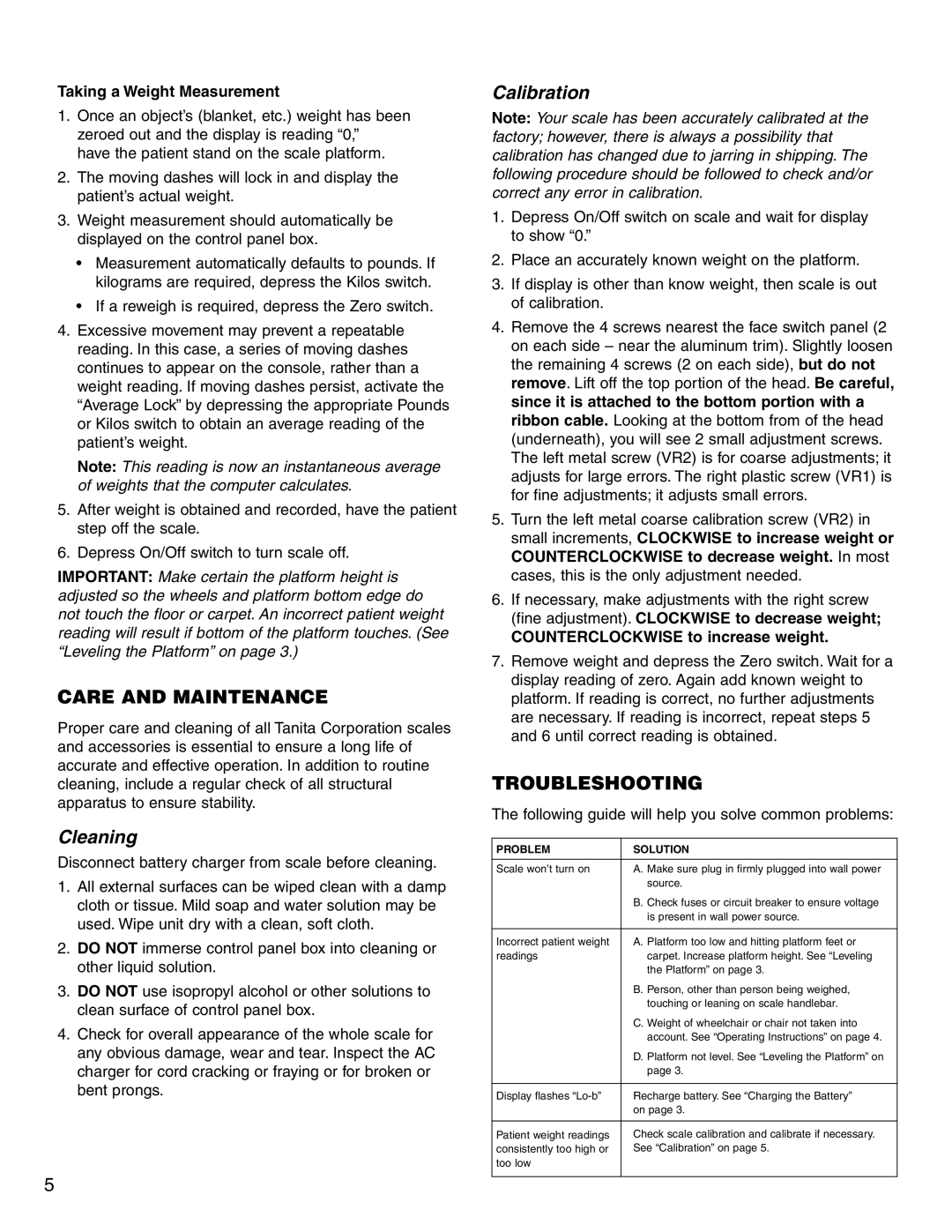3500 specifications
The Tanita 3500 is a highly regarded segment in the health and fitness sector, known for its advanced body composition analysis capabilities. This dual-frequency body fat scale operates with precision and provides a wealth of data for users evaluating their health metrics. Designed for both personal and professional settings, the Tanita 3500 is widely used in gyms, clinics, and homes.One of the standout features of the Tanita 3500 is its ability to measure not just weight but also body fat percentage, muscle mass, hydration levels, and bone mass. Utilizing bioelectrical impedance analysis (BIA) technology, the scale sends a harmless electrical current through the body to estimate these values. This method is favored for its non-invasiveness and quick result delivery, often within seconds.
Moreover, the Tanita 3500 boasts a large LCD display that enhances usability, allowing users to easily read their measurements. The scale provides a user-friendly interface, making it suitable for individuals of all ages and technical backgrounds. With a maximum weight capacity of up to 350 pounds, it accommodates a broad range of users, promoting inclusivity in fitness assessment.
Another notable characteristic is its memory function, capable of storing data for multiple users. This feature is particularly beneficial for families or group settings, enabling users to monitor their progress over time. The Tanita 3500 also features automatic unit conversion, allowing users to view their measurements in either pounds or kilograms based on their preference.
Durability is another important aspect of the Tanita 3500. Crafted with high-quality materials, the scale is built to withstand frequent use, making it an excellent investment for both home and commercial applications. Its sleek design ensures it blends seamlessly into various environments without compromising functionality.
In addition to its technological advancements, the device comes with user-friendly instructions, making it straightforward to set up and utilize effectively. This combination of innovative technology and user-centric design positions the Tanita 3500 as a leading choice for those serious about tracking their body composition and overall health. Whether you're an athlete, fitness enthusiast, or someone just beginning their health journey, the Tanita 3500 offers a comprehensive suite of features to help you meet your goals.
